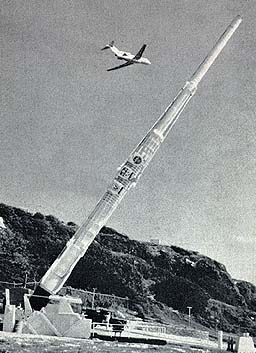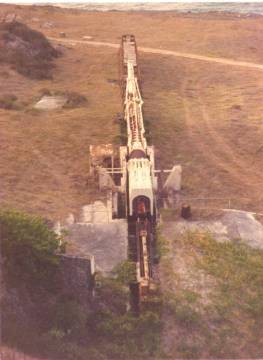|
-------------------------- ------------------- Solar Shocks |
HARP, for High Altitude Research Project, was a study of the upper atmosphere by instruments shot from a cannon. The project was conducted in the 1960s by scientists of the McGill University in Montreal, who named their vehicle the "Martlet", an old name for the martin bird; the shield of the McGill University in Montreal displays three red martlets. The cannon which propelled the Martlet to the high atmosphere was the creation of Gerald Bull, a Canadian engineer who specialized in the design of cannon. From the US Navy Bull obtained two cannon of the type used by battleships, with a 16-inch (40 cm) caliber, and combined them end-to-end to create a single tube of nearly twice the length. The cannon was mounted on the island of Barbados and fired nearly vertically over the ocean. To reduce air resistance, the 200-lb Martlet vehicle was given a smaller diameter than 16 inches, with wooden blocks filling the space between it and the barrel. Because the payload and attachments were about 10 times lighter than the regular 16-inch shell, the acceleration was much larger, about 25,000 g: electric circuits had to be encased in plastic to resist the great forces. The peak altitude was extended (by 4 miles), by pumping out most of the air in the gun barrel before the shot. When the cannon fired--its loud bang was heard all over Barbados--the airtight cover over the muzzle was blown away and the Martlet rose into the high atmosphere, to altitudes of 80-90 miles. |

